Background:
Go Fast Bits (GFB) Diverter Valve + (DV+) is a bypass valve option for the Mk7 GTI that can supplement the OE stock diverter valve. During a discussion about diverter valves it was theorized that the GFB DV+ can improve the performance of the GTI stock DV.
Looking over the GFB DV+ product description it states that it works with the stock DV to improve performance and reliability.
Product description video
Performance benefits attributed to this part include:
- “The end result is sharper throttle response,“
- “Additionally, in both cases, the solenoid on the OE diverter is directly connected to the valve mechanism, which is not ideal because neither it nor the return spring are strong enough to open and close the valve reliably at high boost.“
- “This feature also improves on the factory system by opening the valve progressively in response to boost pressure, so it only opens as much as required to get the job done (the factory valve simply opens and shuts, it cannot partially open if boost pressure is low), resulting in better throttle response.“
- 20% faster open
- 50% faster close
Peer research:
I looked to find some independent evaluations of the DV+ from other users of the Mk7 GTI. I was able to find a couple of write ups on the Motor Verso website.
DV+ driving impression:
The initial noticeable difference is more responsiveness on throttle and the car pulls harder than it did with the original diverter valve on. Between gear shifts, the car gets back on the power faster than it did previously. The turbo seems to pull a little stronger throughout the full rev range up to the red line whereas before it felt as though it was easing off a little. I have no reason to believe my factory fitted part was underperforming. There were no indications to suggest so. The DV+ has definitely made an improvement on the OEM part and with that being said I’d highly recommend it, even more so if you’re running higher power than standard.
Motor Verso
Another write-up on the Motor Verso site described the DV+ on a Mk6, which I figured might be close enough to get an idea about any performance changes caused by the product. The link to this write-up is below.
Upgrading the DV from Motorverso
Some of the observations from the first writer contradicted observations from the second writer. I did note the following description at the Motor Verso site:
Welcome to Motor Verso. Motor Verso is an automotive website; for car enthusiasts, run by car enthusiasts. We have a focus on strong photography, and engaging articles about performance, luxury and interesting cars.
Motor Verso Website
The site’s “focus on strong photography” didn’t give confidence in the technical rigor of the evaluations.
Test Process:
I decided to test the GFB DV+ for myself to see what I could learn about it.
My first acquisition was a “New, open box” GFB DV+ purchased off of eBay. That item turned out to be counterfeit, as I learned with the help from GFB.
Note: GFB was very helpful in helping to spot irregularities in the performance from the counterfeit DV+, as well as supplying me with a Genuine product to continue testing with. See the bottom of the post for more info about the counterfeit.
With the previous testing of the stock GTI diverter valve having already taken place, I installed the DV+ onto the Shuenk IS38+ turbocharger on my GTI. For these tests I operated with a Stratified custom E30 tune that boost to 28 psi and tapers down to around 25-26 psi.
Of interest to me is how quickly the DV+ closes, how quickly it opens, and how fast boost pressure builds in comparison with the stock DV.
Note: Throttle response is not something I tried to quantify since any change is likely to be imperceptible – despite the claim of most aftermarket products to improve throttle response. The time for the DV to close once the accelerator pedal starts to be depressed is ~0.05 seconds.
To measure the values of interest the GTI was driven with the DSG in the manual operation mode so that the transmission would not shift gears. The accelerator pedal was lifted and depressed to open and close the diverter valve similar to what would occur during a gear shift.
This method was compared with a manual transmission gear shift when the stock DV was compared to a BOV.
A sampling of data measured using this method is shown below:
Test Results:
The first comparison is of boost pressure tapering off once the accelerator pedal is raised to the 0% input position.
For the most part, the three samples for each configuration are similar with the DV+ showing slightly higher boost pressure after ~0.6 seconds.
Assessing the boost pressure reading at 0.7 seconds indicates a difference of around 0.4-0.7 psi.
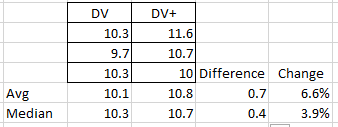
The next comparison is of recovery time. This is the amount of time that passes during boost pressure “blowoff” between the ECU signaling the DV to close and the boost pressure reaching a minimum value.
The stock DV appears to have a slightly faster recovery time shown by the blue box diagram being lower than the orange box. Since the variation in the data causes the boxes to overlap the difference may not be significant.
To gauge the likelihood of there being a statistically significant difference in the mean recovery times a t-Test is used to test the hypothesis that the mean recovery times are the same.
There is enough difference in the measured data that we cannot accept the hypothesis that the recovery times are likely to be the same.
From a practical standpoint, it seems unlikely that a driver would be able to detect an average difference that is slightly less than 0.03 seconds.
The next comparison looks at how long it takes for the boost pressure to build to 20 psi once the accelerator pedal is fully depressed.
Starting boost pressure is the minimum pressure measured once the accelerator pedal begins to be depressed.
Because the length of time is dependent upon the starting boost pressure, the time for boost pressure to build is plotted against the starting boost pressure using a scatterplot.
The intermingling of the data points indicates there is no significant difference between the two products using this measure.
Conclusions:
Several measurements were made using the stock GTI diverter valve and a GFB DV+. No significant differences were observed between the products that I believe an operator would be able to detect.
No attempt was made to quantify throttle response. Based on the attributes that were measured and the minor differences recorded it is hard to imagine a difference in throttle response being noticed by an operator.
The results of this test do not support the performance claims related to the DV+.
This test did not evaluate durability under high boost conditions. The DV+ replaces elements of the stock DV, notably the plastic stock piston with a metal piston. Possibly the DV+ may provide better durability under high boost conditions.
The DV+ does not appear to have any adverse effect on the GTI operation.
Counterfeit DV+
As mentioned at the opening, my first experience testing a DV+ turned out to be with a counterfeit product.
The first set of data that I recorded with the counterfeit DV+ was a boost taper. When I compared the data with the stock DV I noticed there is an initial boost spike, and then the boost pressure oscillates as it tapers off.

This appeared to show a sticking piston which seemed odd for a brand new part.
I contacted Go Fast Bits for some help with diagnosing the issue and they asked me for a picture of the DV+. Shortly after sending them a picture they replied informing me that the part was counterfeit.
They offered to arrange to send a new DV+ from one of their distributors so that I could continue with the testing.
The remainder of pictures show the GFB DV+ alongside the counterfeit product. The genuine parts are on the left side of the pictures and the counterfeit is on the right.

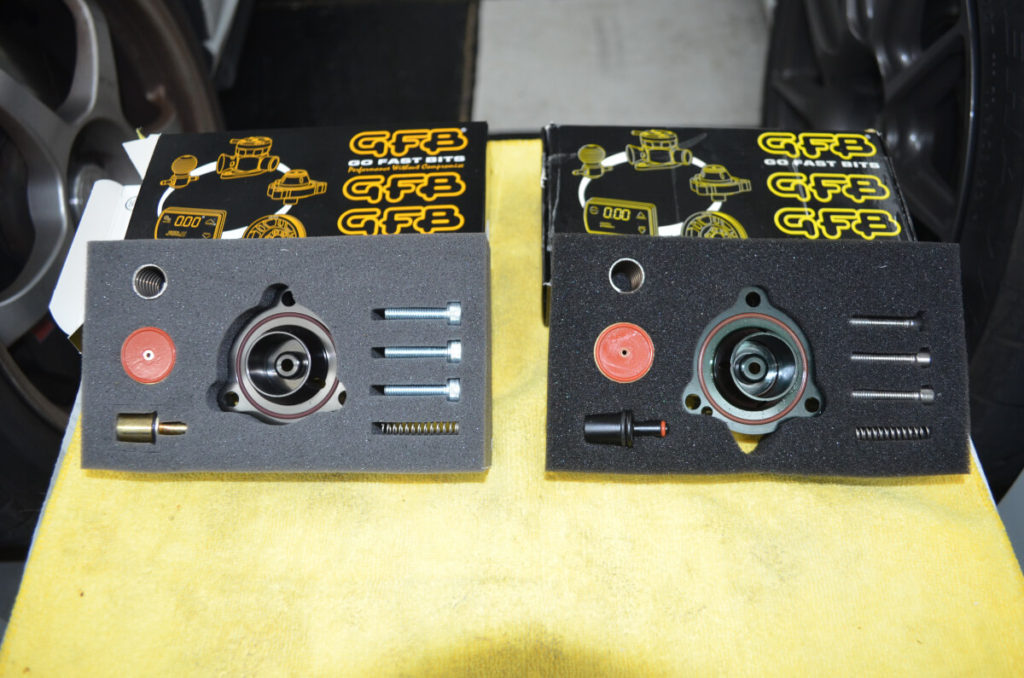


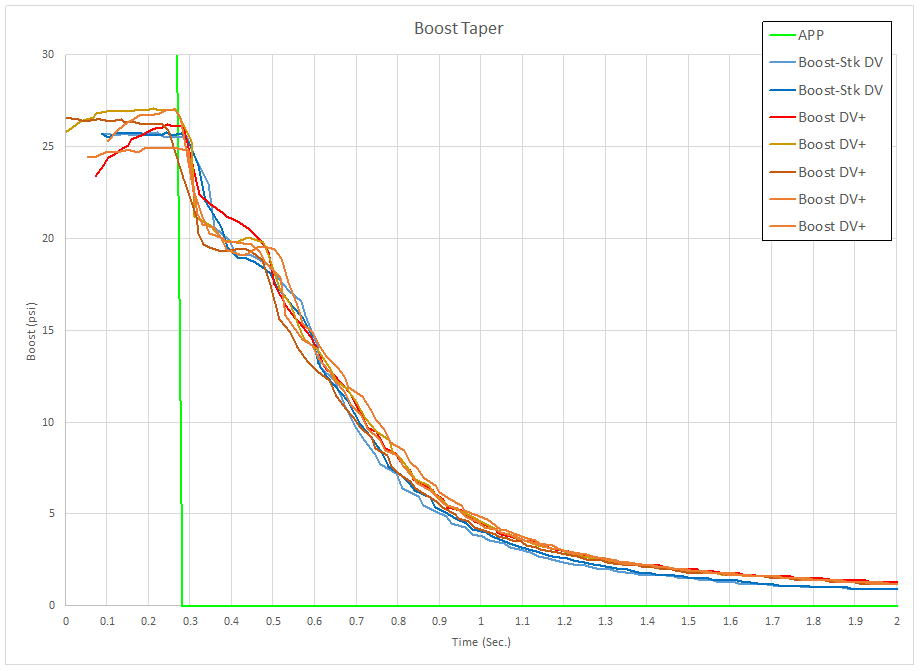
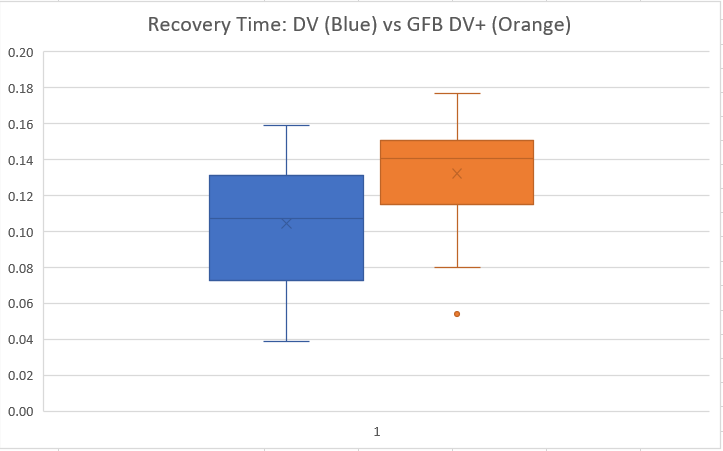



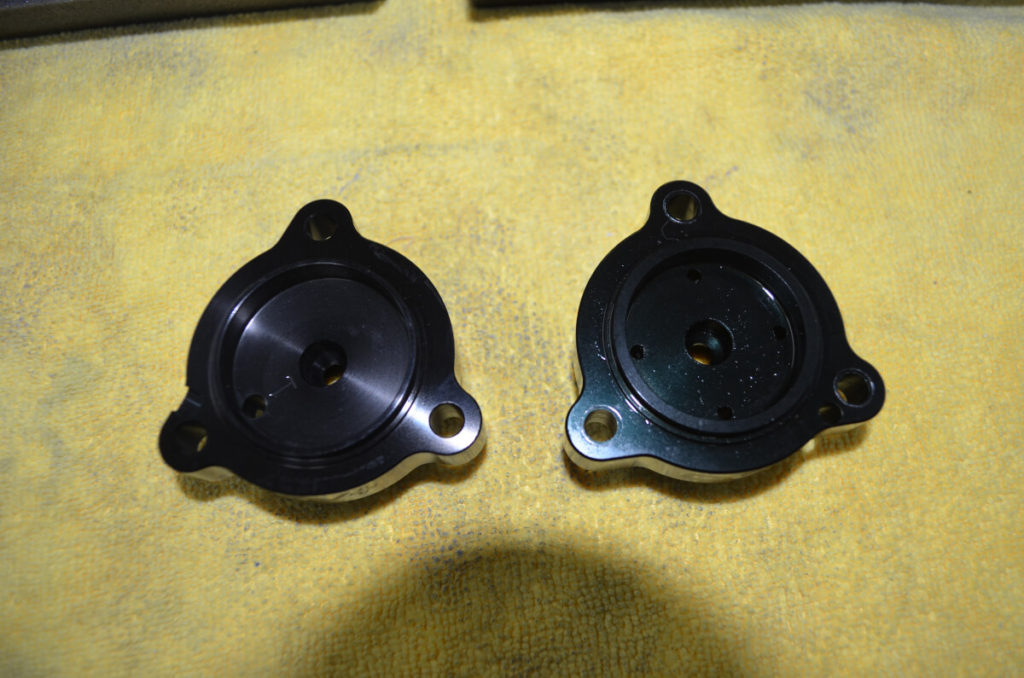

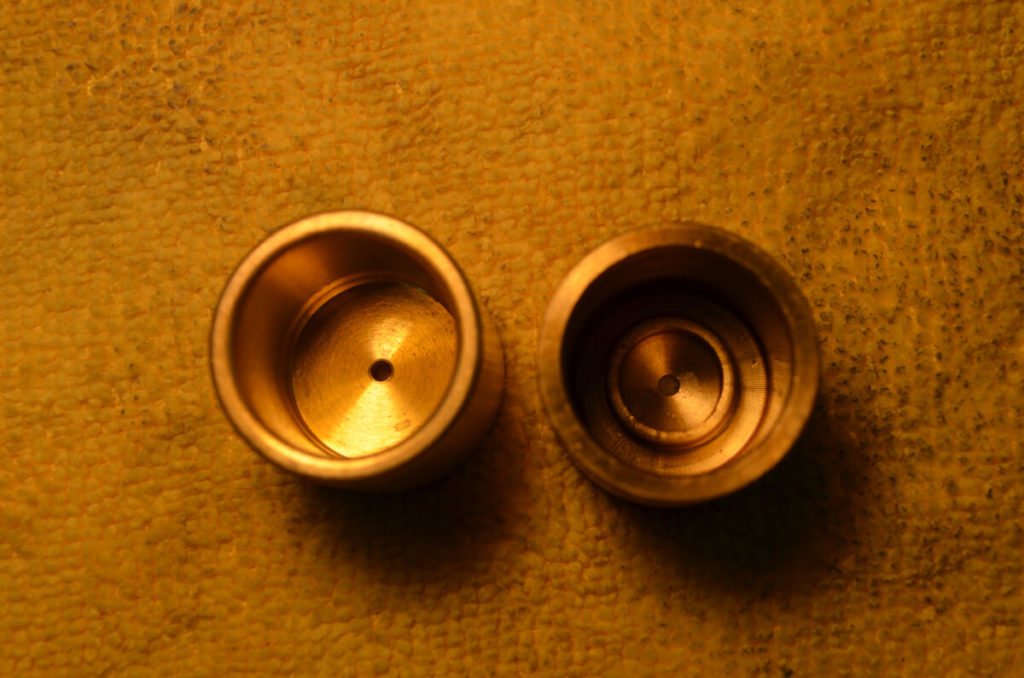
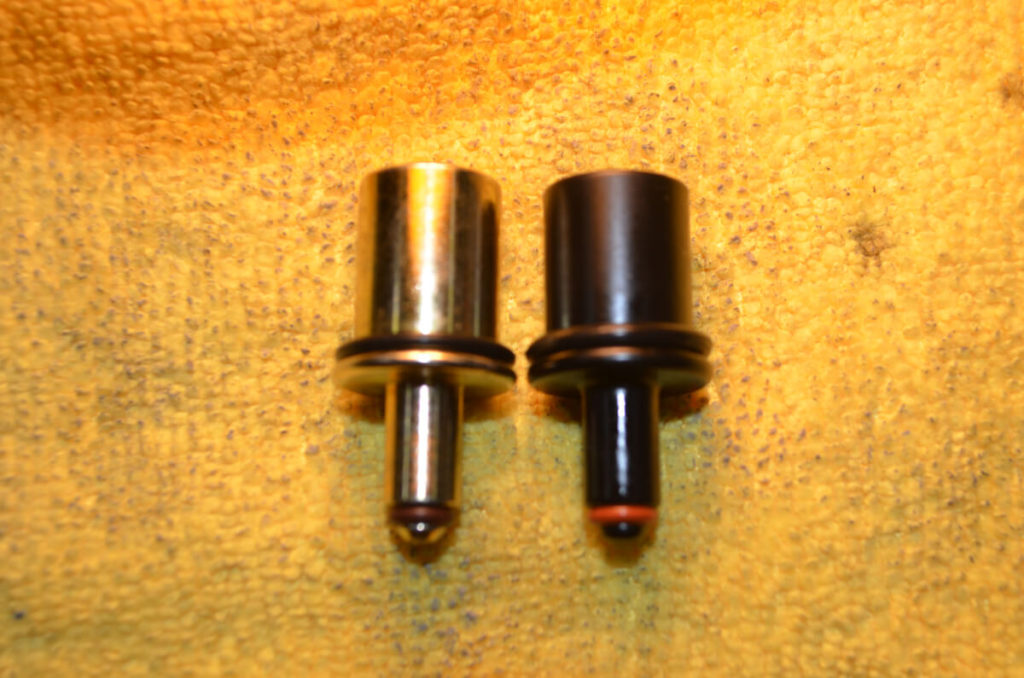
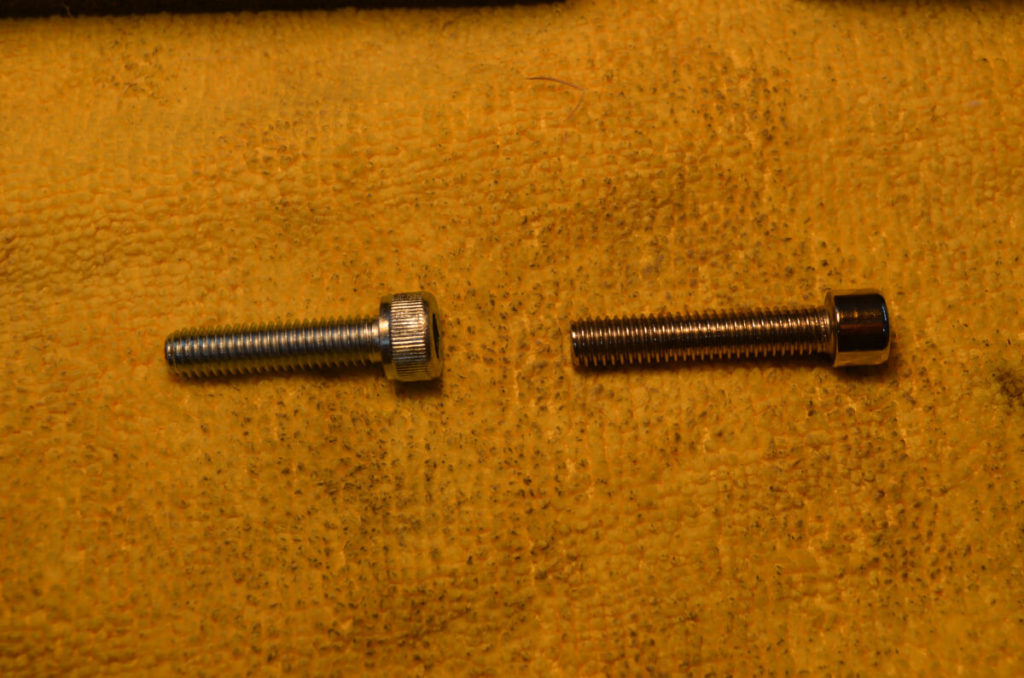
Another fantastically researched post, Jeff. I’m not surprised by your results — we’ve never detected any performance difference between OEM and this aftermarket “upgrade” — but your data are concrete evidence. Thanks for the work on this.
Thanks for the feedback and for corroborating the results you’ve observed.
It was always my understanding that the point of the DV+ was to help not bleed off more boost than was necessary between shifts on a manual. For the DSG this will essentially do nothing as far as I understand it. The test on a manual would be interesting to look at how much boost is lost between shifts with the stock setup and the DV+ setup and if that helped with achieving full boost after the shift sooner.
Yes, when I was in touch with GFB about the device I asked about what I should be looking for. They described that during the boost drop the stock DV would remain completely open longer, while the DV+ would gradually begin to close, preventing the boost from dropping as much. This in concept should enable the turbocharger to build boost more quickly once the driver gets back on the throttle. I did note that the DV+ holds slightly higher boost pressure, but in my opinion, it is not enough of a difference to be noticed. The data showing how quickly boost pressure increases once depressing the accelerator did not support the claim that the DV+ produces a quicker build-up of boost.
Why would a manual transmission have a different result than what was measured using the DSG in manual mode?
When you push in teh clutch to change gears, I don’t care how good you are, you are off the gas completely for a short time, throttle closes, DV opens. In a DSG – under WOT there isn’t that issue, I don’t think I ever here my DV dump when I’m accelerating, and it changes gears.
Correct about the DSG, the throttle does not close during gear shifts.

So really, to test this thing you need a manual. I’ve always said that folks with a DSG don’t get anything from this/added complications/not needed.
No, by putting the DSG in manual mode it’s possible to lift off the accelerator and press it again and have the throttle and DV respond the same as what takes place during a manual transmission gearshift.
Ah ok so simulate the manual – got it. Are you going to/did you try that?
Yes, that is what I do in this comparison and did when I compared the DV and a BOV. In the section of that post where I discuss “Determining Test Conditions (Continued)” I show a comparison of a manual transmission shifting and the DSG simulating the shift.
I am not a mathematician so I barely understand the t test applied but from the charts and graphs you have the dv+ seems to perform better more consistently even if slightly, I assume humans can’t detect such minuscule changes but wouldn’t you want the better performing part? Also did you oil the brass part? I saw some people do and some people don’t when they install them. Again thanks for the research I love checking out your testing.
Of the three measures that were taken the DV+ performed better than the DV on one of them. The differences between the configurations in any of the three measures are quite small. The DV+ has an advantage at tapering the boost off, holding it slightly higher. Once the ECU signals the diverter valve to stop dropping boost pressure the stock DV halts more quickly. When getting back on the accelerator, the time for boost pressure to build up to 20 psi is again very similar, but overall the stock DV appears to build boost slightly faster.
I did lightly coat the piston with engine oil.
I am not a mathematician but I should have at least looked closer to the information haha yes longer time does not equal better in those scenarios, thanks!
You’re welcome!
So basically it is not worth spending money on it, can you test the new GBF (black one with vacuum pipes ) similar to turbosmart. Thanks for the data.
You’re welcome!
I think it may depend on what the reason for purchase is. The performance I evaluated was not significantly different compared to just using the stock DV. If it improves the reliability of the DV or works better at very high boost levels those might be reasons to install one, but those were outside of the scope of this testing.
I don’t plan to purchase another product like this to test, but if I am provided with one I would be willing to see how it compares.
hello ,
are you sure of GFB (L) & counterfeit (R) for all picture ?
it’s not reverse ?
The components on the left side of the pictures are what GFB supplied me with. The components on the right side are what I had purchased and GFB indicated were counterfeit.